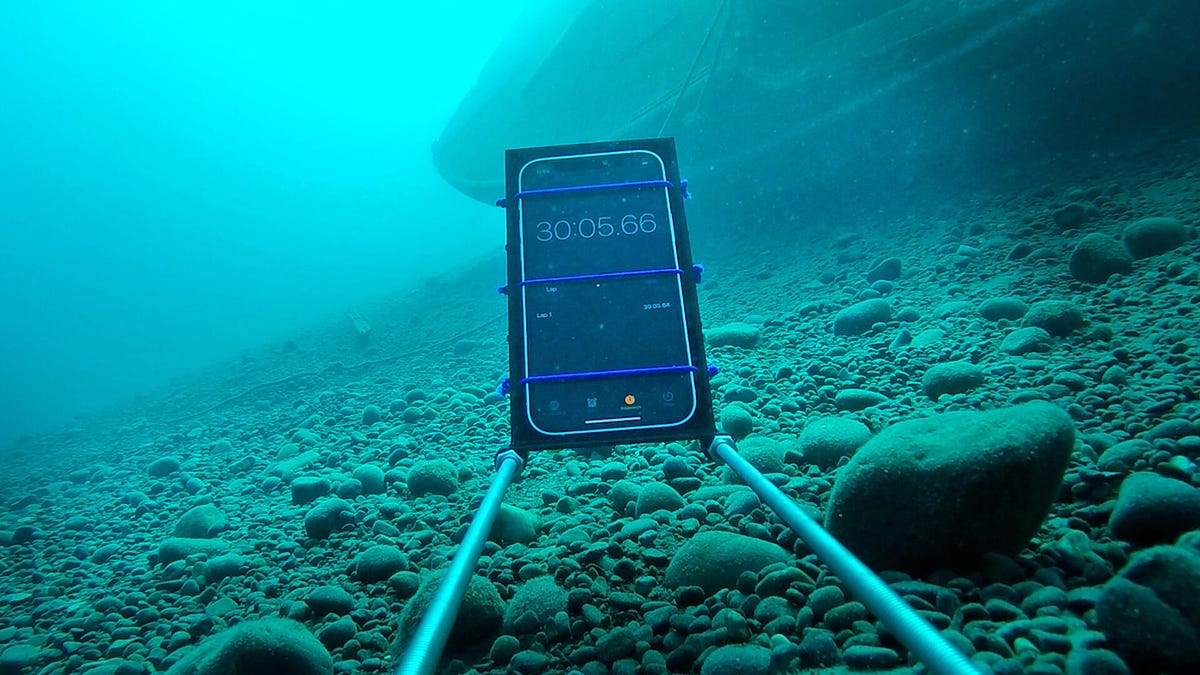
Water resistance is a term often thrown around, but what does it really mean? Water-resistant gadgets and materials are designed to withstand some exposure to water without getting damaged. However, they aren't completely waterproof. Waterproof means something can be submerged in water without harm, while water-resistant items can only handle a splash or two. Understanding the difference is crucial when choosing products like watches, phones, or even clothing. This guide will dive into 25 fascinating facts about water resistance, helping you make informed decisions and avoid costly mistakes. Ready to get your feet wet with knowledge? Let's dive in!
Key Takeaways:
- Water resistance is more than just staying dry. It's about nature, technology, and everyday items all working to keep us protected from water. From ducks to smartphones, water resistance is everywhere!
- Did you know that water resistance goes beyond gadgets? It's in your makeup, backpack, and even playing cards! Water-resistant materials make our lives easier and more fun, no matter the weather.
Understanding Water Resistance
Water resistance is a fascinating topic that touches various aspects of our daily lives. From gadgets to clothing, it plays a crucial role in ensuring durability and functionality. Let's dive into some intriguing facts about water resistance.
-
Water resistance vs. waterproof: These terms are often used interchangeably, but they mean different things. Water-resistant items can withstand water to a certain extent, while waterproof items are impervious to water.
-
IP ratings: The International Protection (IP) rating system measures water resistance. For example, IP67 means the item is dust-tight and can be submerged in water up to 1 meter for 30 minutes.
-
Hydrophobic materials: Some materials repel water naturally. These hydrophobic materials include substances like Teflon and certain types of fabric coatings.
-
Gore-Tex technology: This popular fabric is both waterproof and breathable. It's used in outdoor gear to keep people dry while allowing sweat to escape.
-
Smartphone water resistance: Modern smartphones often come with water resistance. For instance, the iPhone 13 has an IP68 rating, meaning it can be submerged in up to 6 meters of water for 30 minutes.
Water Resistance in Nature
Nature has its own way of dealing with water. Many plants and animals have evolved to be water-resistant, ensuring their survival in wet environments.
-
Lotus effect: The lotus leaf is famous for its water-repellent properties. Water droplets roll off its surface, cleaning dirt and debris in the process.
-
Duck feathers: Ducks have special oils on their feathers that make them water-resistant. This keeps them dry and buoyant while swimming.
-
Insect adaptations: Some insects, like water striders, have hydrophobic legs that allow them to walk on water without sinking.
-
Fish scales: Fish scales are naturally water-resistant, protecting them from infections and helping them move smoothly through water.
-
Amphibian skin: Amphibians like frogs have skin that can absorb water but also has a layer of mucus to prevent dehydration.
Water Resistance in Technology
Technology has harnessed water resistance to create innovative products that can withstand harsh conditions. This has led to advancements in various fields.
-
Water-resistant watches: Many watches are designed to be water-resistant, with some capable of withstanding deep-sea diving pressures.
-
Waterproof cameras: Waterproof cameras allow photographers to capture stunning underwater images without damaging their equipment.
-
Water-resistant headphones: Athletes and swimmers can enjoy music while working out, thanks to water-resistant headphones.
-
Protective coatings: Electronic devices often have protective coatings that prevent water damage, extending their lifespan.
-
Nanotechnology: Advances in nanotechnology have led to the development of ultra-thin, water-resistant coatings for various applications.
Everyday Water-Resistant Items
Water resistance isn't just for high-tech gadgets or nature; it's also found in many everyday items that make our lives easier and more convenient.
-
Rain jackets: These jackets are designed to keep you dry during wet weather, using water-resistant materials and coatings.
-
Umbrellas: Umbrellas are a simple yet effective way to stay dry, with water-resistant fabric that repels rain.
-
Waterproof shoes: Waterproof shoes are perfect for rainy days or hiking through wet terrain, keeping your feet dry and comfortable.
-
Backpacks: Many backpacks come with water-resistant coatings to protect your belongings from getting wet.
-
Makeup: Waterproof makeup products, like mascara and foundation, ensure your look stays intact even in humid or rainy conditions.
Fun Facts About Water Resistance
Water resistance can be fun and surprising. Here are some lesser-known facts that might just blow your mind.
-
Water-resistant paper: Some types of paper are designed to be water-resistant, making them perfect for outdoor use or in wet environments.
-
Waterproof playing cards: These cards are great for poolside games or beach trips, as they won't get damaged by water.
-
Water-resistant wallets: Keep your cash and cards safe with water-resistant wallets, perfect for outdoor adventures.
-
Waterproof speakers: Enjoy your favorite tunes by the pool or in the shower with waterproof speakers.
-
Water-resistant bandages: These bandages stay on even when wet, protecting wounds and speeding up the healing process.
Final Splash
Water resistance is more than just a feature on your watch or phone. It’s a fascinating blend of science and engineering that keeps our gadgets safe from the elements. From the early days of waterproofing to today’s advanced nanotechnology, we’ve come a long way. Understanding terms like IP ratings and ATM can help you make smarter choices when buying electronics. Remember, no device is completely waterproof, but knowing its limits can save you a lot of trouble. Whether you’re a swimmer, a hiker, or just someone who’s clumsy around water, these facts can help you protect your gear. So next time you’re shopping for a new gadget, keep these water resistance facts in mind. They might just save your device from an unexpected dunk. Stay dry, and keep exploring!
Frequently Asked Questions
Was this page helpful?
Our commitment to delivering trustworthy and engaging content is at the heart of what we do. Each fact on our site is contributed by real users like you, bringing a wealth of diverse insights and information. To ensure the highest standards of accuracy and reliability, our dedicated editors meticulously review each submission. This process guarantees that the facts we share are not only fascinating but also credible. Trust in our commitment to quality and authenticity as you explore and learn with us.


